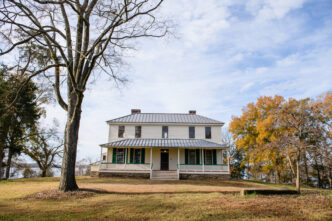Clemson’s landscape is defined by two dams that separate its main campus from the expansive waters of Lake Hartwell. Towering earthen walls and rocky slopes topped by well-traveled trails are a favorite spot for visitors and residents to enjoy the outdoors.
But how “the dikes” came to be is a decade-long story that dates back more than 70 years.
This is that story.
In the 1950s, Clemson University was an emerging, national voice in higher ed, tucked in a foothills town alongside the Seneca River. The river, which ran along the west edge of campus, was created by the confluence of the Keowee River and Twelvemile Creek and snaked through agricultural fields and oak tree groves for 21 miles until it merged with the Tugaloo River to make the Savannah River.
Like many tributaries in proximity to established towns and communities at that time, the river caught the attention of the U.S. Army Corps of Engineers because the region had a rapidly growing need for flood mitigation and electricity.
The Corps presented an eye-catching plan in 1950 to build a dam 43 miles south of the Clemson campus. It was a significant distance removed from the town and University, but the resulting lake would be immense, stretching nearly 90 miles up the river valleys with a shoreline winding 962 miles back and forth through the hills and flooding at least 7,000 acres of the University’s land. The original proposed flood plan included 400 acres of the historic Fort Hill estate and Clemson’s then seven-year-old football stadium, which would have been submerged to the 26th row.
Archivists at Clemson’s Special Collections and Archives preserved correspondence between the Corps and the school related to the construction of the Hartwell project, knowing how significant it was. Records about its potential impact on the college began as early as 1949, archives show. By 1956, the controversy reached the Clemson College Board of Trustees, who drafted a letter stating that damage to the University would be “enormous and irreparable” and implored the Corps to consider alternative plans.
Showdown at the Brock farm
“If the dam is built as proposed, and its specifications are not altered, it will flood approximately 9,000 acres of Clemson land as well as many acres belonging to South Carolinians,” the letter stated. “Including in these 9,000 acres are many acres which have been developed during the 63-year existence of the college and which cannot be replaced.”
They explained that the land was essential to the school for many reasons, including dairy pastures, veterans’ housing, and agricultural experiments being carried out on the acreage.
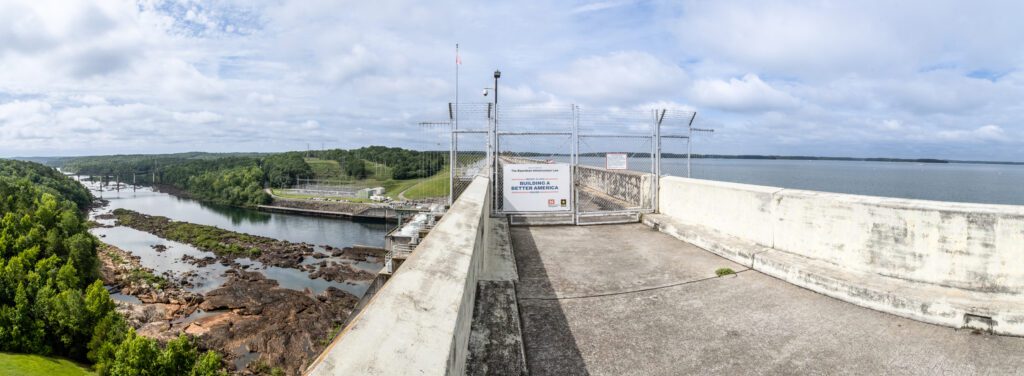
“Many important gains have been made in agriculture as a result of the use of this land,” the letter said. “There can be no replacement for this land if it is flooded by a dam, which we believe, could be very well dispensed with.”
The board asserted that state legislators backing the Hartwell Dam project had not adequately considered the damages — to the college or neighboring private property owners.
Historical records tell the story of one of those property owners, 78-year-old Eliza Brock, who single-handedly held up the dam’s construction. Her 103-acre farm was officially reverted to government ownership in June 1956 when the Corps of Engineers filed a formal “declaration of taking.” But Brock was not one to be told what to do with her own land and refused to allow government workers on her property. According to the official U.S. Army Corps of Engineers account – when crews came to clear the property, Brock and her daughter met them with the business ends of their rifles.
News accounts published in issues of the Greenville News from the time describe how the Brocks held off contractors at gunpoint for more than a month. The standoff was settled out of court when Brock finally accepted an offer of $6,850 for all 103 acres, and the timber-clearing process at long last began.
Standing Clemson’s ground
Clemson archives follow the efforts of trustees to prevent the flooding of school property through written correspondence between school leaders and Corps leadership. They suggested building a series of smaller dams rather than one large one for superior flood control.
“Colossal dams . . . seem to be the handiwork of big government,” Trustees said.
An April 13, 1957 article in The State newspaper titled “General Agreement Reported on Hartwell” noted the U.S. Department of Agriculture had been enlisted to protect the agricultural research on school property and dam construction was halted in the early months of 1957, pending further investigation.
As an alternative to the mass flooding of campus, Clemson leaders proposed three plans to protect school holdings. In order of preference, these plans proposed:
- Lowering the power pool from 660 feet to 610 feet.
- Diverting the Seneca River around the endangered college property to prevent the anticipated flooding.
- Compensation for college lands and facilities that would be affected by the impounded waters.

The delay was temporary, records show. The restudy concluded that redesigning the project with a power pool of only 610 feet would be economically unfeasible. The best alternative, the Corps determined, was to block the Seneca River with two diversion dams so that impounded waters would pose no threat to the Clemson College lands.
These are the modern-day “dikes” known to every Clemson student today.
Forever connected
Construction moved forward based on the revised plans. The two diversion dams would be built to protect Clemson’s main campus from flood waters, and a pump station would be constructed at the base of the lower dam to move rainwater from the 6,000-acre drainage basin around Honeycutt Creek up over the dike and into the new lake.
Work resumed in 1957 but hit another serious complication in August 1960, when Clemson College signed a memorandum of understanding with the Nello L. Teer Company to clear and grade land in the area of the historic cemetery in the center of campus, Woodland Cemetery, removing 100,000 to 300,000 cubic yards of dirt to use in the construction of the dikes. Administrators petitioned a South Carolina court in Oconee County to disinter the remains of enslaved people and convicted laborers on the western slope of the cemetery and to move them approximately 300 feet south.
The petition states that “unmarked field stones set in no regular pattern are thought by legend and ancient report to mark the graves of deceased Negro slaves or of prisoner laborers at one time employed in the construction of the works of the College.” The court granted the request and noted that the new “graves [are] to be marked with stones as they are now marked.”
Rhondda Thomas, Calhoun Lemon Professor of Literature and director of the Call My Name Project, says the known graves were carefully moved and reinterred, but there were likely others disintegrated beyond identification.
“The remains of several African American children were disturbed during the removal of the earth and were purportedly reinterred on the South side of the cemetery,” says Thomas. Other remains, however, were likely present but not detectable due, she explains, to acidic soil in which organic materials such as human remains, cotton fabric, and wooden coffins disintegrate quickly.
The project resumed after all identifiable remains were relocated and was finally completed in December 1963.
Lake Hartwell and Clemson’s campus were officially connected.
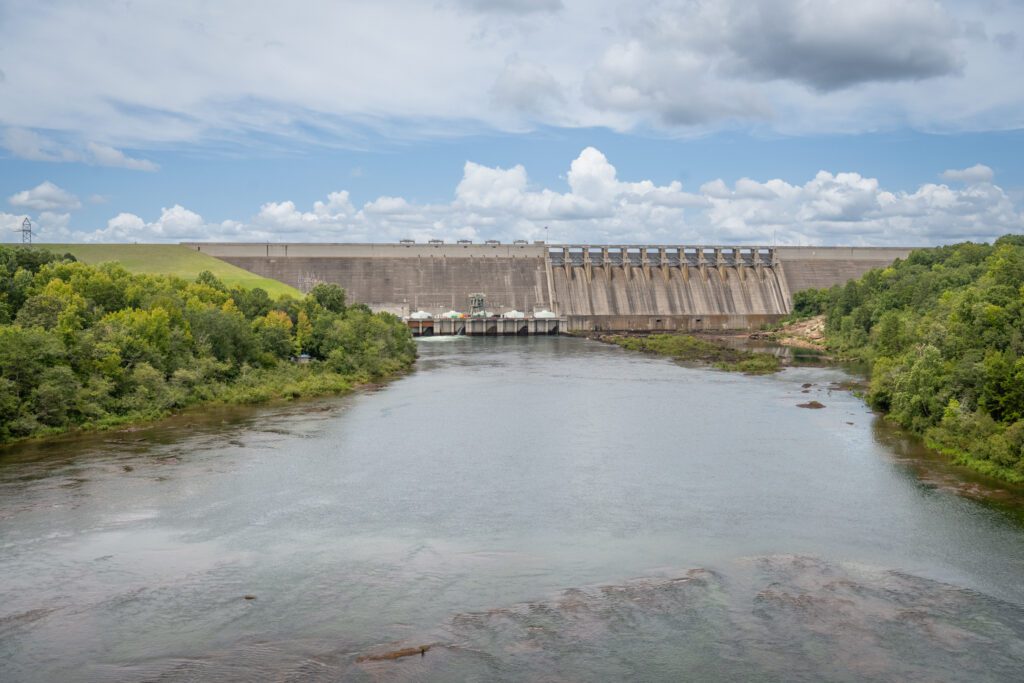
Water’s edge
Today, the lake and the University are two parts of a whole Clemson Experience. Lake Harwell divides campus into two parts: the main campus on the east side and the Snow Family Outdoor Fitness and Wellness complex on the west. It would be hard for students to imagine Clemson without days spent along the lakefront’s shores or in its waters.
The two diversion dams, “The Dikes,” are popular landmarks now. Every day, runners, dog walkers and anglers populate the trails along their tops, enjoying the views across the lake on one side and the campus below on the other.
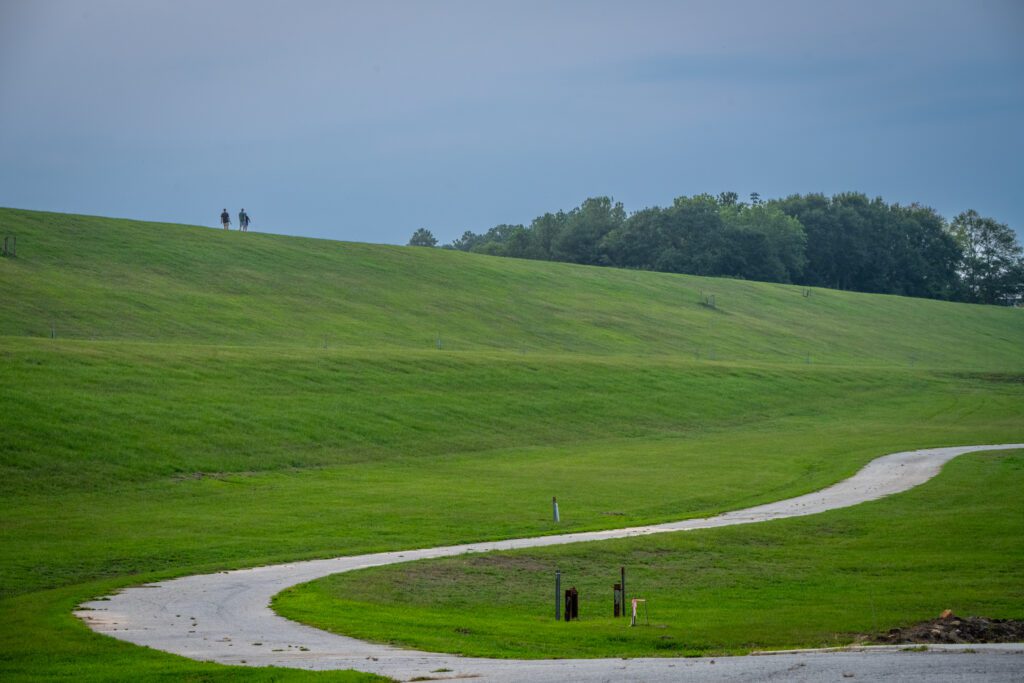
Most probably don’t stop to consider the man-made mountains of earth are the only thing keeping Clemson from being submerged under hundreds of feet of water, says Clemson University Historian Otis Pickett.
“The Dikes have obscured the way in which humans have interacted with this landscape over time,” says Pickett. “The river valley of the Seneca and Keowee shaped this landscape, the Native American peoples who cultivated it gave it human engagement, the plantations that ran adjacent to it and the African American communities that lived near Seneca Bottoms or ‘the bottoms’ in the late nineteenth and early twentieth centuries labored to build it up for the modern era as enslaved peoples and later wage workers.
“However, The Dikes have their own history now as both protectors from flooding and spaces for recreation.”
Pickett says Clemson’s ability to negotiate the space with the Army Corps of Engineers was a significant achievement with a complicated history that is worth considering.
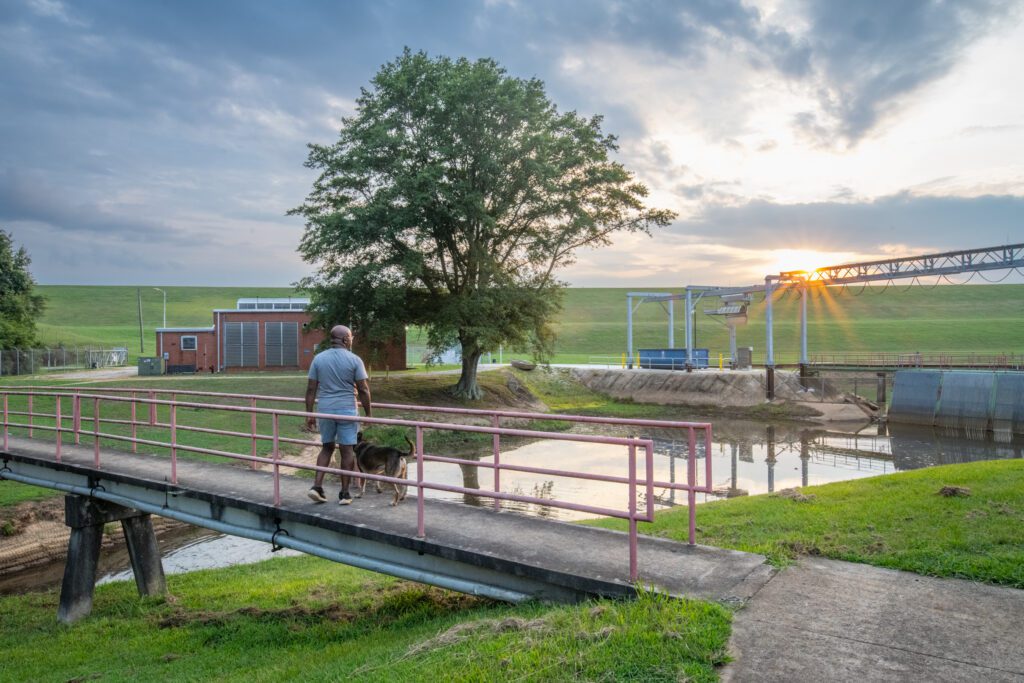
“The earth that was moved, according to the research of the Woodland Cemetery Project, possibly contained human remains. It is interesting and ironic to think that many of those who built our landscape as enslaved people and wage workers could now be a part of the physical structure, helping to continue to build up the landscape, protect it and keep it secure,” says Pickett. “History is complex like that. I think having a healthy reverence as we walk on The Dikes is good.
“To remember those who built it and those whose remains may still be a part of it helps us remember that every step we take on this campus is rife with history and complex human relationships.”
Powering the future
Today, 43 miles south of Clemson’s main campus, the Lake Hartwell dam stands firm between the shores of South Carolina and Georgia. Still operated by the U.S. Army Corps of Engineers, its five massive generators continue to crank out enough electricity to power approximately 15,000 homes a year, or just under 397,000 megawatt hours (MWH) in 2023. It works with the Lake Russell and Lake Thurmond dams as the Savannah River System, which produced 1.3 million MWH in 2023, and it is a valuable energy provider that supports the larger region. Plant manager Ryan Hanna, who celebrated 20 years working at the Hartwell Dam powerplant in November 2024, said several things are unique about the facility as he gave a tour of the plant in the shadow of the 300-ton gantry crane used to maintain its generators.
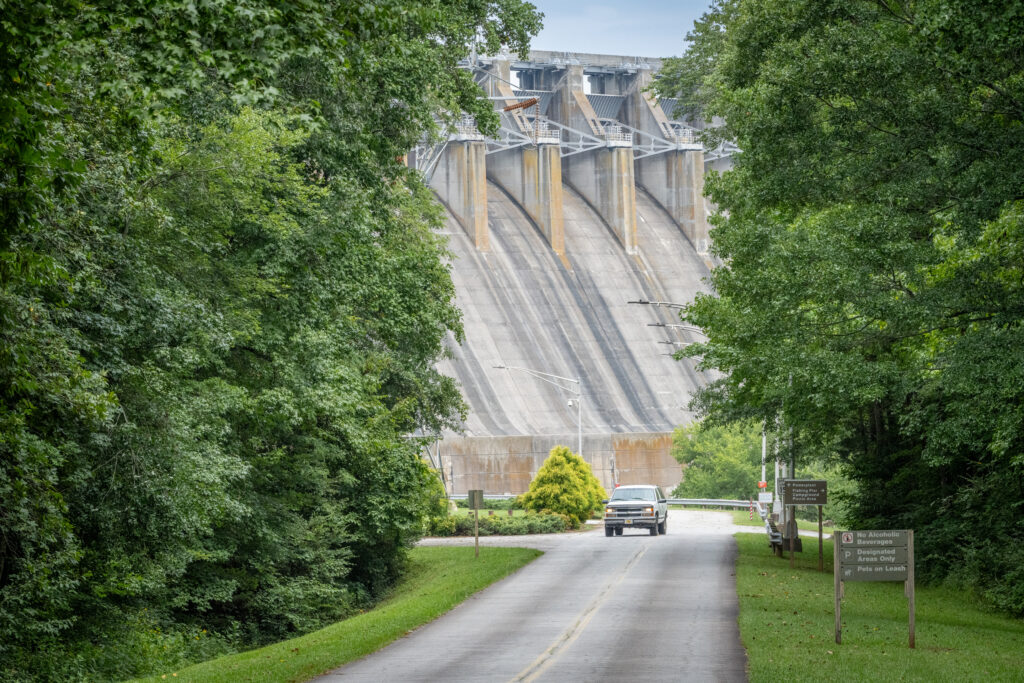
“Hartwell is the only Corps plant with outdoor generators. Most dams have the generators inside the power plant,” he says. “Just the rotor inside the generator is 296 tons, not counting the shaft and the turbine.”
Hanna says the Hartwell Dam Power Plant is a “peaking power” facility because it supplements the grid with additional power during periods of high demand throughout a 24-hour cycle.
“The beauty of hydropower is we can start and stop, load and unload generators in a matter of minutes. Most of the power industry can’t fluctuate like that, especially nuclear. Once they get ramped up, you can’t just shut it down.”
As for the dam’s flood mitigation mission, Hanna says it has done its job there, too.
“Historically, the floodgates have only been used three times for water management. Our Hydrology Section does a great job managing our water flows and levels through generation, which is preferred,” says Hanna.
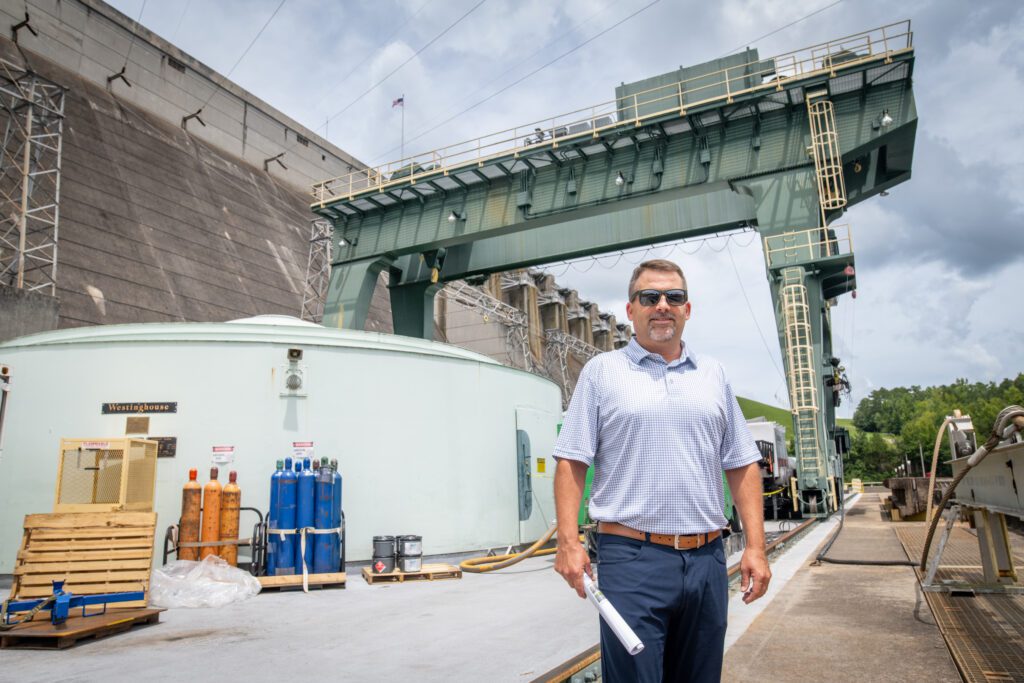
Hanna and his crew of four mechanics and four electricians also operate and maintain the pump station at the base of the lower diversion dam, keeping Hunnicutt Creek from flooding the campus daily. To be sure, controlling the water to keep Lake Hartwell healthy and Clemson dry is a delicate balancing act. Both the University and the Corps continue to work in concert to maintain the integrity of the dams for future strength and sustainability.
Ultimately, a good swath of Clemson College was still lost under the water. But today, most would agree the lake changed the face of Clemson and turned its campus into a destination location, regionally and beyond.
For more than six decades, it has endured.


